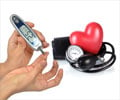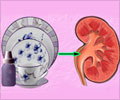patients who require therapy to lower their blood pressure following a stroke do not appear to be at a higher risk for bleeding or other adverse outcomes after receiving anti-clotting therapy
A report in the September issue of Archives of Neurology, one of the JAMA/Archives journals, has revealed that patients who require therapy to lower their blood pressure following a stroke do not appear to be at a higher risk for bleeding or other adverse outcomes after receiving anti-clotting therapy.
Patients who have an acute ischemic stroke—in which a clot blocks blood flow to the brain—often have elevated blood pressure, according to background information in the article. “As many as 10 percent of otherwise eligible patients do not receive tissue plasminogen activator (tPA), the only proved therapy for acute ischemic stroke, because of severely elevated blood pressure,” the authors write. “In the past, guidelines recommended against giving tPA to treat acute ischemic stroke when aggressive measures (such as continuous infusion or more than two infusions of anti-hypertensive agents) are required to maintain blood pressure lower than 185/110 millimeters of mercury.”Sheryl Martin-Schild, M.D., Ph.D., then of the University of Texas Health Sciences Center at Houston and now of Tulane University Health Sciences Center, New Orleans, and colleagues reviewed the medical records of 178 patients with acute ischemic stroke who received intravenous tPA within three hours. Of these, 50 required treatment for lowering blood pressure before beginning tPA therapy. This included 24 (48 percent) who received the medication nicardipine, either alone or in combination with the drug labetalol.
“We observed several important differences between patients who required blood pressure–lowering treatment and those who did not,” the authors write. “They had more severe strokes and their blood glucose concentration was higher, predicting they would have a worse outcome if all other factors were equal. As expected, they more frequently had a history of hypertension.”
After controlling for these factors—including age, baseline stroke severity and blood glucose levels—there were no differences between patients who received antihypertensive treatments and those who didn’t in adverse events, poor outcomes or stroke severity scores at discharge.
“Overall, the results of the present study provide the first experimental support for the revised American Heart Association guidelines allowing tPA therapy in patients requiring aggressive blood pressure management and also provides support for the use of nicardipine in patients with acute ischemic stroke who are eligible for thrombolytic therapy,” the authors conclude. “Aggressive control of severely elevated blood pressure is feasible and should not automatically exclude otherwise eligible patients with acute ischemic stroke from receiving thrombolytic therapy.”
Source-Newswise
RAS/SK















